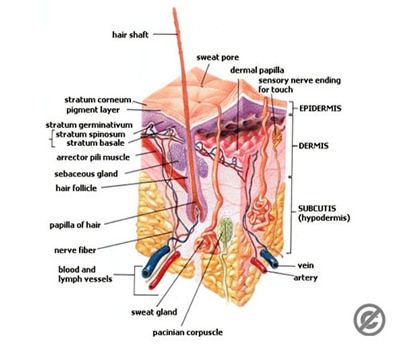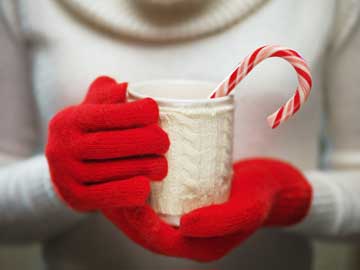Acne affects both men and women. Acne knows no age boundaries. It can suddenly catch up to you at any time of your life. Eating healthy helps treat it but chocolate isn’t going to cause acne but eating a slew of junk food on a regular basis will lower your skin’s immune system! What you do and don’t do to treat your skin will have a distinct affect on how long it takes to get acne under control.
Thankfully, Marie P , a licensed aethetician and make-up artist, is here to share her knowledge and wisdom about how to live with and manage acne! Marie P writes
I am THE Makeup Junkie blog
Even though I often discuss makeup, I am a trained esthetician (aesthetician) and my favorite thing to do is to treat acne. I feel that treating acne helps your self-esteem. Nobody wants to go around with large pustules on their face, because it makes you feel belittled as a human. Acne scars can be so large that they pit the face and also leave a person feeling that they have little self-worth. When I was a teenager I was lucky enough to have great skin, it wasn’t until I had kids that I began to experience some acne myself. I found a good regimen that required the use of a prescription product once in a while.
First, let me tell you that there are three layers of skin: from the bottom up it goes hypodermis, dermis and epidermis. The hypodermis is the fatty layer. The dermis is the main layer of skin and the epidermis is the thin layer that sheds. Next is the all important follicle. Many people think that acne comes from “pores” but it is really developed in the hair follicle. In reality we really only have sweat pores.

The hair grows out of the follicle and the sebaceous gland (oil gland) fills the follicle with sebum (oil). Skin cells build up around the lining of the follicle and sometimes they are shed out of the follicle but often they end of building up inside the follicle causing various types of acne. It takes 30 days for the skin cells to make their way up from the bottom of the follicle to the top and out to the top of the skin (epidermis).
If the skin does not end up making its way outside of the hair follicle then you end up having acne. There are six types of acne: blackheads, milia/whiteheads, papules, pustules, nodules and cysts . There is also rosacea, seborrhea and steatoma. Severe acne that is not treated leads to scarring.
Types of Acne:
Blackheads (comedones)-are a buildup of skin cells and hardened sebum in the follicle; they occur mostly on the face (nose, chin and forehead),back and shoulders. Teenagers usually get blackheads but anyone can be prone to them because of the likelihood to have an excess of sebum and a shedding of cells. The name blackhead comes from when the blockage forms and oxidizes from the air. To treat them the oiliness of the skin needs to be reduced and then one needs something to help shed the dead skin cells so that they don’t stick to the follicular wall. Salicylic acid 2% is good for this as is glycolic acid 10%. Scrubs are good too, as long as there isn’t any inflammation such as pustules. Don’t squeeze!!!! You might end up with an inflammation such a pimple or a scar and that is what you don’t want.
Whiteheads/Milia– are a buildup of sebum and skin cells that are trapped beneath the skin. They can occur anywhere on the face, but they can also occur on the shoulders and back. Milia usually occur under the eye. They look like grains of sand under the skin. Don’t pick at these. To treat the ones under the eye you should have a professional such as an esthetician or a dermatologist help you. The ones on the rest of the face can be treated with peel pads or peels, salicylic acid 2%, glycolic acid, malic acid, azelaic acid, etc.
Papules-are essentially a whitehead that has become inflamed. It is on the way to a pustule, but is not there yet. Again, it has sebum and the skin cells in it. These can occur anywhere on the face. Don’t pick or try to break it open. That is asking for infection. Cleanse with anti-bacterial cleanser. Treat with a low dose of benzoyl peroxide (2.5%) for a few days or if that is too strong for you, glycolic acid 10% or salicylic acid 5%.
Pustule-This is a true pimple. It has oil (sebum), skin cells and bacteria that cause infection. These can happen anywhere on the face. Pimples occur because of hormones, or because the follicle swelled and ruptured filling with sebum, skin cells and bacteria then escaping into the upper layers of the skin (dermis). They are filled with pus. Never pick at these!!! If you do they can spread into the surrounding areas causing even more infection. To treat minor pimples (just a couple):
cleanse with anti-bacterial cleanser.
Use benzoyl peroxide 10% all over the face.
This is a prophylactic (preventative measure) as well as a treatment. (Make sure to use white pillow cases and towels, shirts, etc.; It bleaches fabric.) If that is too harsh on your skin then try a high dose of salicylic acid 5% or higher.Severe acne needs to be treated by a dermatologist before scarring occurs. There are many treatments for this kind of acne. Retin-A (tretinoin) is a vitamin A acid in a cream by prescription that works very well but can be very drying on the skin.
There are also antibiotics, as well as antibiotic creams and lotions. I have used one of the lotions and it works very well!
Sulfur which smells like rotten eggs, works very well too and is found over the counter and by prescription.
Tazorac cream and Differin cream (both prescription) work great. Finally, there is now laser acne treatment. As you can see, there are a number of treatments for acne!Nodules-Nodules are severely inflamed, hard lesions lodged deep within the skin. Nodules can stay for weeks or months, hardening into cysts.
Cysts-are pus filled lesions deep under the skin. They develop when the contents of your blackheads/whiteheads broken or spilled into the surrounding areas. Your body’s local immune system responds to this ‘attack’ by producing pus. This is the most serious form of acne. Nodules and cysts can form independently of each other. If not treated, nodules and cysts can cause severe scarring. These lesions are more likely to occur in young teen boys and men. They need to be treated by a dermatologist.
Rosacea-was previously known as acne rosacea. It is a chronic inflammation of the cheeks and nasal area. There is redness, dilation of the blood vessels and formation of papules and pustules. The cause is unknown. Certain things are known to aggravate rosacea, such as alcohol and spicy foods. Left untreated is can lead to scarring of the face.
Seborrhea-is when the sebaceous glands (oil glands) start to become overactive and secrete large amounts of sebum (oil). Sometimes this is the basis of an acne condition.
Acne Scarring can be extremely severe and many people find themselves not wanting to socialize much because of the severity of the scarring. Some treatments include: microdermabrasion, peels and laser treatments. It just depends on how severe the scarring is. If you have a teen who has acne, make sure to get a handle on it now. Don’t wait until it is too late and there is scarring. Acne can be treated very easily be estheticians and dermatologists. If there is light acne, go to an esthetician. If it is very severe, make an appointment with a dermatologist. It often takes three months to get in to see one!
I hope this has been very informative. I feel that acne is a battle that we can win. It just takes a little work!
See more photos on the original blog post HERE
Follow Marie P on these social media platforms!
https://twitter.com/iammakeupjunkie
https://www.facebook.com/IAmTHEMakeupJunkie
Thanks to Marie P for her detailed take on how to treat acne! See an MD and definitely make sure you bookmark this for the girls and guys who would find this useful!
Stevie Wilson,
LA-Story.com
SALE ON SALE: Extra 20% off ALL sale items! Ends 1/1. Code: EXTRA20
Get free shipping everyday on orders $35+ at Beauty.com plus earn 5% back!
Subscribe to RSS headline updates from:
Powered by FeedBurner
If you are going to feature content from LA-Story.com including podcasts or videos including the accompanying text, please respect copyright provisions. We require a notation of content origination (meaning credit tag), a linkback to the specific page & please email the link to [email protected] before the piece goes live.
LA-Story.com, LA-Story Recessionista, Celebrity Stylescope, Celebrity Style Slam Trademark/Copyright: KBP Inc./TNBT Inc 2007-14
![blackheads[3]](https://la-story.com/wp-content/uploads/2014/01/blackheads3.jpg)
![milia_924_lg[3]](https://la-story.com/wp-content/uploads/2014/01/milia_924_lg3-300x224.jpg)
![papules[3]](https://la-story.com/wp-content/uploads/2014/01/papules3.jpg)
![pustulesmall[4]](https://la-story.com/wp-content/uploads/2014/01/pustulesmall4.jpg)
![cysts[3]](https://la-story.com/wp-content/uploads/2014/01/cysts3.jpg)
![Acne-Spot-Remover-thumb[3]](https://la-story.com/wp-content/uploads/2014/01/Acne-Spot-Remover-thumb3.jpg)
![rosacea_4[3]](https://la-story.com/wp-content/uploads/2014/01/rosacea_43-300x235.jpg)
![seborrhea[3]](https://la-story.com/wp-content/uploads/2014/01/seborrhea3.jpg)







This is helpful to people of all ages. I go once a month to my esthetician and know it is needed. This post helps me manage my own skin care with more expertise.
Very informative for sure. My elder sister is suffering from acne and she had to go to a dermatologist. The doctor has given her a cream to apply. The results are not very clear yet, but we will see. And now that I got this article of yours, I will pass it over to my sister. Thanks for the info!
http://www.fashionhaunt.com